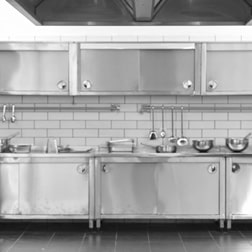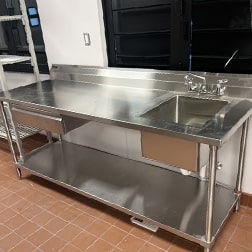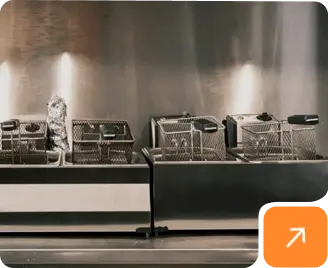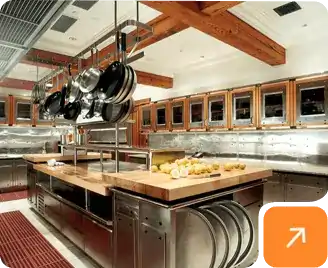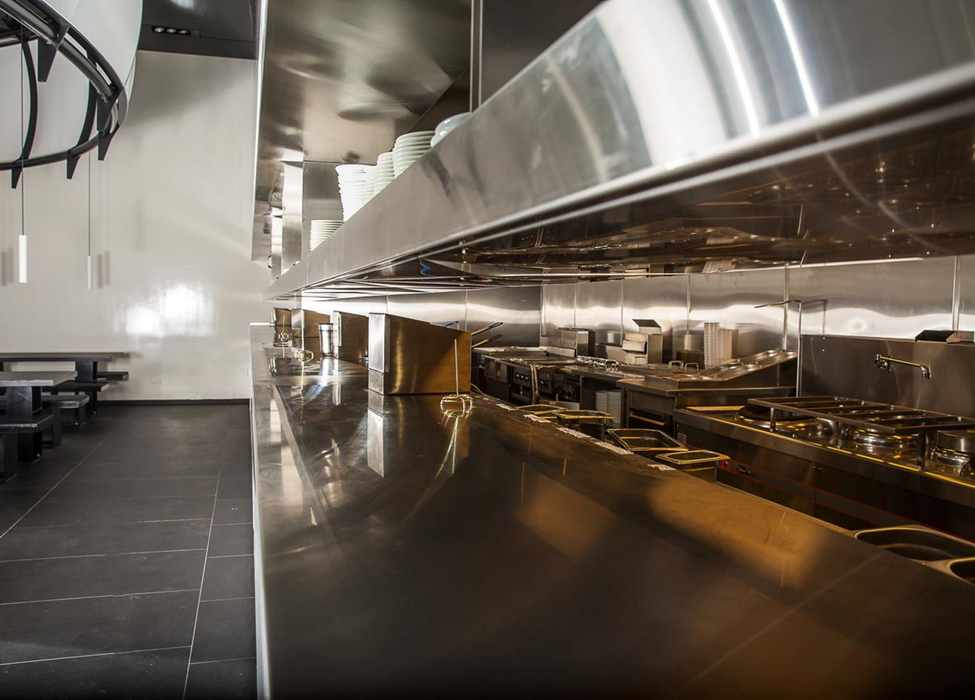
When outfitting your commercial kitchen, selecting the right ventilation system is paramount. Your choice can impact air quality, safety, and compliance with regulations. To ensure you make an informed decision, let's delve into the four key factors to consider when selecting a commercial kitchen hood.
- Location: Geographical Considerations
The geographical location of your establishment plays a crucial role in determining the type of ventilation system you need. Climate variations and local regulations can influence ventilation requirements. For instance, kitchens located in colder regions may require additional consideration for makeup air to offset the loss of warm air when exhausting.
Just as essential? Understanding your local codes and regulations. Some areas may have specific requirements for ventilation systems, such as minimum airflow rates or restrictions on emissions. Consulting with a professional familiar with local regulations can help ensure compliance and optimal performance.
Furthermore, geographical factors can affect the availability of outdoor venting options. Urban settings may have limited space or restrictions on outdoor venting, necessitating the use of alternative ventilation solutions such as energy recovery systems or pollution control devices.
- Ceiling Height: Maximizing Efficiency
Ceiling height directly impacts the effectiveness of your ventilation system. Taller ceilings provide more space for heat and smoke to disperse, allowing for better airflow and capture. Conversely, kitchens with lower ceilings may require hoods positioned closer to cooking equipment to effectively capture contaminants.
When selecting a commercial kitchen hood, consider the height of your ceilings and the volume of space that needs ventilation. Opting for a hood with adjustable ductwork and capture zones can accommodate various ceiling heights and ensure efficient ventilation across your kitchen workspace.
Additionally, ceiling height influences the design of exhaust ducts and fan systems. Higher ceilings may require larger ducts and more powerful fans to maintain adequate airflow and capture efficiency. Proper sizing and design of ventilation components are critical to achieving optimal performance and energy efficiency.
- Cooking Equipment/Application: Matching Ventilation to Needs
The type of cooking equipment and the nature of your culinary operations greatly influence the ventilation requirements of your kitchen. High-output appliances, such as charbroilers or woks, produce substantial heat and grease-laden vapors, necessitating robust ventilation solutions with grease extraction features.
Additionally, consider the layout and configuration of your cooking equipment. Islands, ranges, or specialized cooking stations may require custom hood designs to capture emissions and maintain air quality effectively. Collaborating with ventilation experts can help tailor solutions to your specific cooking applications.
Furthermore, the frequency and intensity of cooking activities impact ventilation system maintenance requirements. Heavy cooking operations may require more frequent cleaning and maintenance to ensure optimal performance and compliance with safety standards. Selecting hood materials and features that facilitate easy cleaning and maintenance can streamline kitchen operations and prolong the lifespan of your ventilation system.
- Placement: Ground Level vs. Upper Floors
The placement of your commercial kitchen within a building can impact ventilation requirements. Kitchens located on the ground floor may have more straightforward venting options, while those on upper floors may require specialized ductwork or makeup air considerations.
The design of the building's HVAC system becomes crucial for kitchens situated on upper floors. Proper coordination between kitchen ventilation and building HVAC ensures balanced airflow and prevents negative pressure issues that can disrupt exhaust performance. Working with experienced ventilation professionals can help navigate these complexities and ensure optimal system performance.
Additionally, consider the proximity of neighboring spaces and potential odor or noise concerns. Properly designed and installed ventilation systems minimize the transfer of cooking odors and noise to adjacent areas, enhancing comfort and satisfaction for both customers and staff.
Final Thoughts
In conclusion, selecting the right commercial kitchen hood involves carefully considering various factors, including geographical location, ceiling height, cooking equipment, and placement within the building. By understanding these key considerations and consulting with experts in kitchen ventilation, you can choose a system that meets your safety, efficiency, and compliance needs.
At HoodMart, we specialize in providing high-quality ventilation solutions tailored to the unique requirements of commercial kitchens. Contact us today to learn more about our products and services.








 CUSTOM FABRICATOR
CUSTOM FABRICATOR


